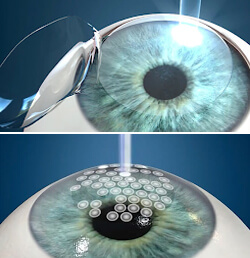Frequently Asked LASIK Questions
Is this a “no-risk” procedure?
What about long-term results?
Will my eyes deteriorate in the future?
What if I move during the procedure?
What if I blink when they’re doing the laser?
Will I need to wear an eye patch after the procedure?
If I don’t get a full correction, will I be able to have a repeat procedure to improve the results?
What are the common problems and complications?
How many people have had PRK and LASIK?
How soon can I return to work and other activities?
Can my results be guaranteed?
Will the treatment cause cataracts, or influence the treatment of cataracts?
What are the odds of eliminating my glasses?
Does the treatment hurt?
You may also wish to browse the FDA’s LASIK frequently asked questions page.






